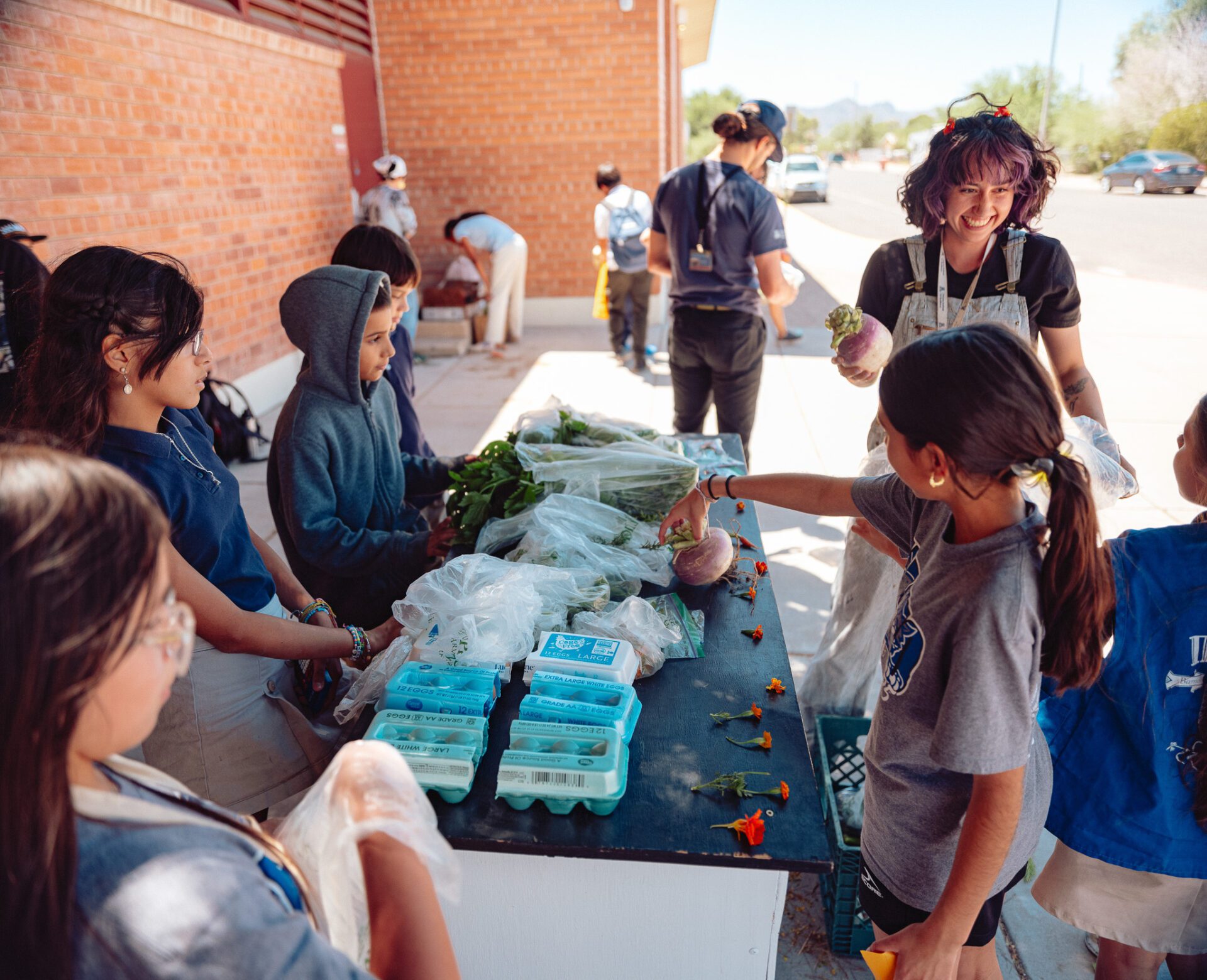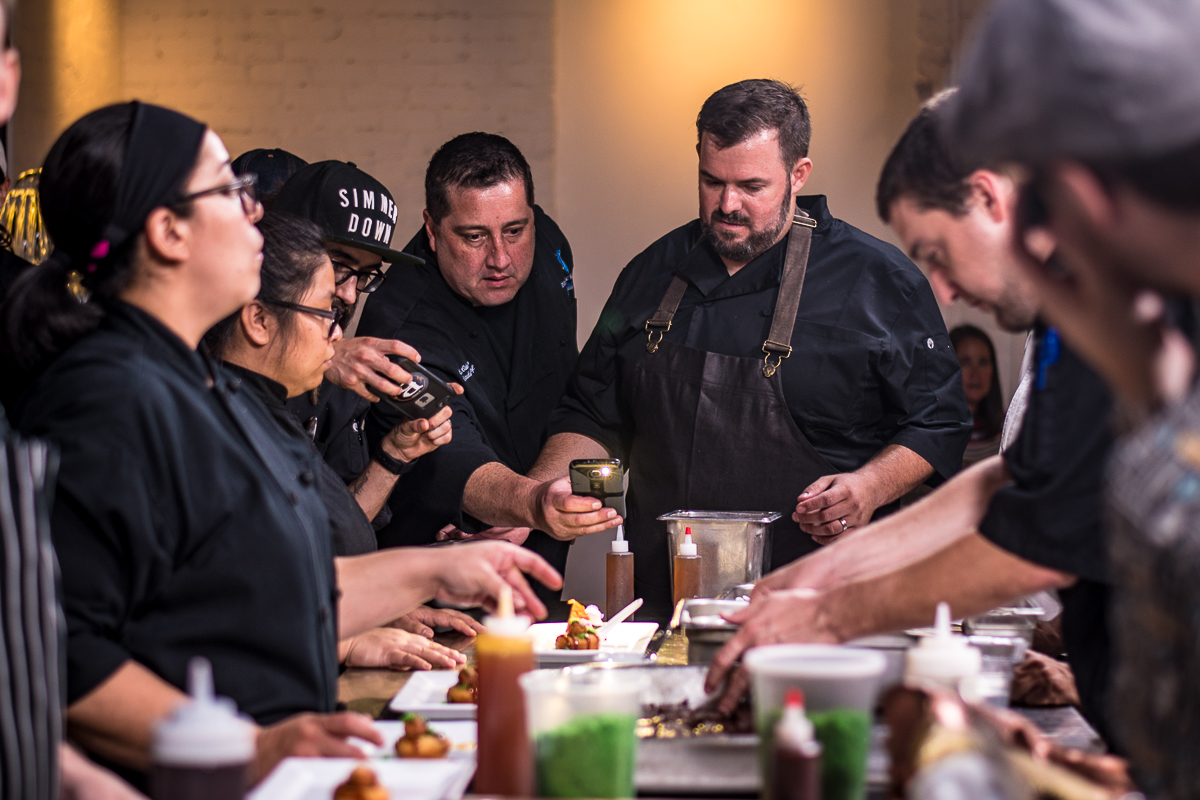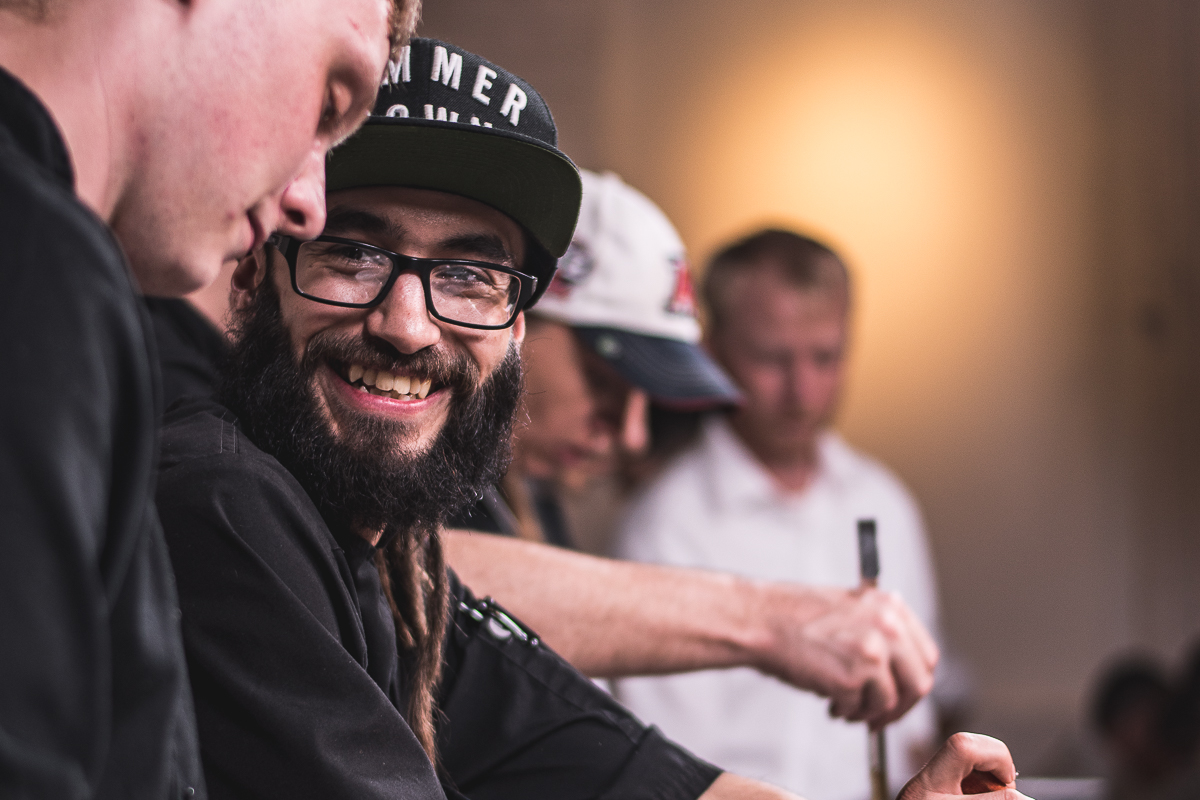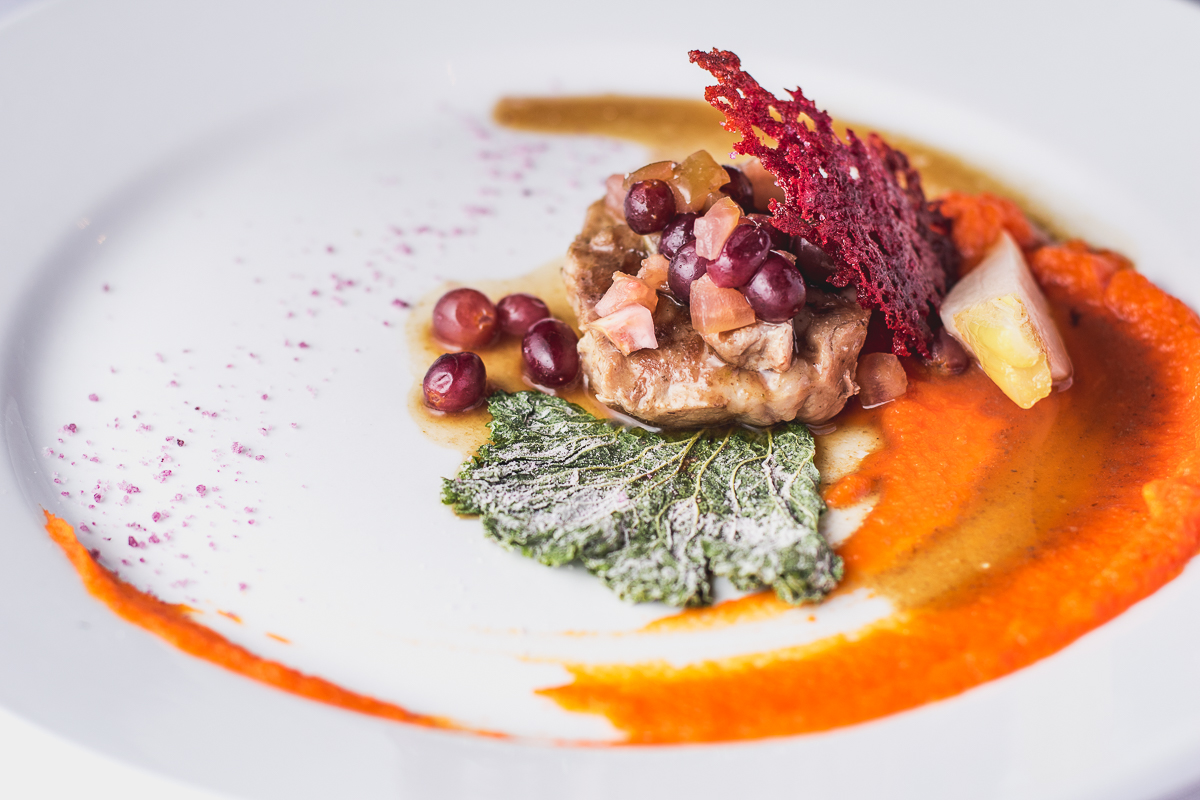
Sometimes chefs just want to have fun and show fellow food lovers a good time. The Gastronomic Union of Tucson (GUT) has helped local culinary creatives achieve that goal–plus several more. Along with a series of pop up dinners, a block party, and food booths at an array of festivals, GUT initiatives have included mentoring chefs chosen to represent Tucson at UNESCO City of Gastronomy gatherings.
Chef exchanges with other cities figure among GUT’s future plans.
Devon Sanner, executive chef at Carriage House and one of GUT’s founding members, defines the group as “a collaboration of three dozen and growing professional chefs and other food professionals who are striving for collegial exchange, community engagement, and continuing culinary education in our region while celebrating the cuisine of Tucson.”

GUT is an offshoot of Tucson Chefs, a private Facebook group created by Obadiah Hindman, executive chef of the Mountain Oyster Club. Initially limited to chefs, the forum eventually grew to include food purveyors and other members of the restaurant and catering community.
Then the online camaraderie flowed over into real life.
According to Mat Cable, chef/owner of Fresco Pizzeria & Pasteria, “Once we got a taste of that community, we wanted to hone it. Rather than just talk, we wanted to create something more, something very chef driven.”
To that end, several members of the group met in August 2016 at Ermanos Craft Beer & Wine Bar and started bouncing around ideas. One that bore fruit was Tucson Knife Fight, a fundraising challenge along the lines of Iron Chef competitions.
Another was GUT.
Why the name? Cable says, “We wanted a good acronym, that was very important. We had to get ‘Tucson’ in there somewhere, so we thought of CUT, for Culinary Union of Tucson. But we also wanted to reference the UNESCO City of Gastronomy designation, so we chose GUT.”
The visceral appellation, in conjunction with the earliest events, led some to believe the group catered mainly to serious carnivores. Inspired by a whole animal butchery practicum given by Ben Forbes of the Forbes Meat Company, GUT’s first collaborative dinners in the summer of 2017 all highlighted snout-to-tail practices, making use of every part of the pig. The trio of feasts included the likes of trotter taquitos, pork osso bucco, pork jowl ja shu, and a donut with pork floss cotton candy, bacon, and ancho caramel.

Four whole roasted pigs put in an appearance at the Block Party on Broadway, co-cohosted by GUT and TEDx Tucson a few months later.
Since then, the group has put a lot more thought into how the public might receive both menus and venues.
“It was a learning curve,” Sanner says. “Maybe we don’t do three snout-to-tail dinners in a row in the future. We learned not to pigeonhole ourselves, to have each dinner loosely related to the next one and to spread our wings within each one.”
This proved to be a winning concept. Among the most popular meals that followed was one featuring ingredients cultivated and harvested in the region prior to European contact—for example, roasted quail stuffed with duck confit and Tohono O’Odham squash atole, corn cookie crumble, and prickly pear sorbet.
Also well received was the recent Deception dinner, which used culinary trompe l’oeil techniques to crowd-pleasing effect. Take the “steak and eggs” dish created by the team led by Michael Elefante of Mama Louisa’s: The steak was really a scallop seared dark and prepared so that it “bled” beet juice when diners cut into it, while the egg was made of white halibut and potato gnocchi with a spherified hot sauce yolk.
“It was fun to do,” said Cable. “We all love to play with our food, and the guests had a blast.”
While most of the chefs and kitchen staff who belong to GUT are in their element cooking at Carriage House–the venue for all the dinners—many were not prepared for the logistical challenges posed by serving food outdoors.
As a result, the otherwise successful Block Party on Broadway was missing one key feature: shade.
“People who do events in Tucson all the time understand that it’s still pretty hot at the beginning of October,” said Sanner. “Most chefs are used to working in Bagdhad conditions in the kitchen, where it’s 120 degrees and humid. We have to remember to appeal to the general public.”
Similarly, GUT members had to fine tune their prep methods to cater to crowds. After taking part in the Arizona Craft Brewers’ Baja Beer Festival and DUSK music festival, Sanner says, “We’ve learned that when you have two or three hundred people in your line, you can’t be indulgent. We want everything to be up to our standards but we also need to be able to prepare it really quickly. It also needs to look appealing. Otherwise people won’t come over.”
The likes of Sonoran poutine and barbacoa fries put a Tucson stamp on classic fair food while being very approachable at the same time.

GUT members are currently working on several outreach projects. They are in talks with Visit Tucson about a possible deep sea fishing collaboration with Puerto Penasco, Mexico.
“Maybe haul in a big fish and do a restaurant takeover down there, then bring up chefs to do the same up here” is how Sanner envisions it. The group would also like to connect with chefs in related communities, perhaps Phoenix and other cities of gastronomy like San Antonio and Ensenada.
Already in progress: mentoring those chosen to represent Tucson at international City of Gastronomy symposia, including Mahmoud Elbarasi, the executive chef at Coronet, who recently went to Gaziantep, Turkey.
“Some people have great chef skills but need a little help in putting together presentations,” Sanner said. “Or, they may be familiar with the local food scene but don’t know how to explain why Tucson has the UNESCO designation, our 4,000 years of agricultural history, our 83 food festivals, the Community Food Bank.”
Putting to rest the old saw about too many chefs in the kitchen spoiling the soup, broth, or stew, participants in GUT events have learned to work and play well together. While Sanner readily admits that getting teams organized can be like herding cats, GUT has managed to hammer out a process.
“People will let us know about their availability or interest in any particular event. Then we’ll have a team draft where the captain of each team will gather all the folks who are interested and brainstorm dishes with them. You don’t have to own a restaurant to participate; you can be a line cook or a dishwasher. If you’re a hard worker and want to get involved, you can get in.”
“Everyone has something they’re really good at. When you get to the top of the food chain, you kind of stay in your lane. GUT provides an opportunity to learn as well as commiserate with other chefs.” He cites as an example: “I run a pizzeria and I don’t get to play with fish, so if at a GUT dinner I get to do a fish dish, it’s exciting. All of a sudden, I’m learning from an expert.”
Cable continued, “When you add sharing this expertise with the community, it’s even better.”
Lear more about the Gastronomic Union of Tucson at gutucson.org.